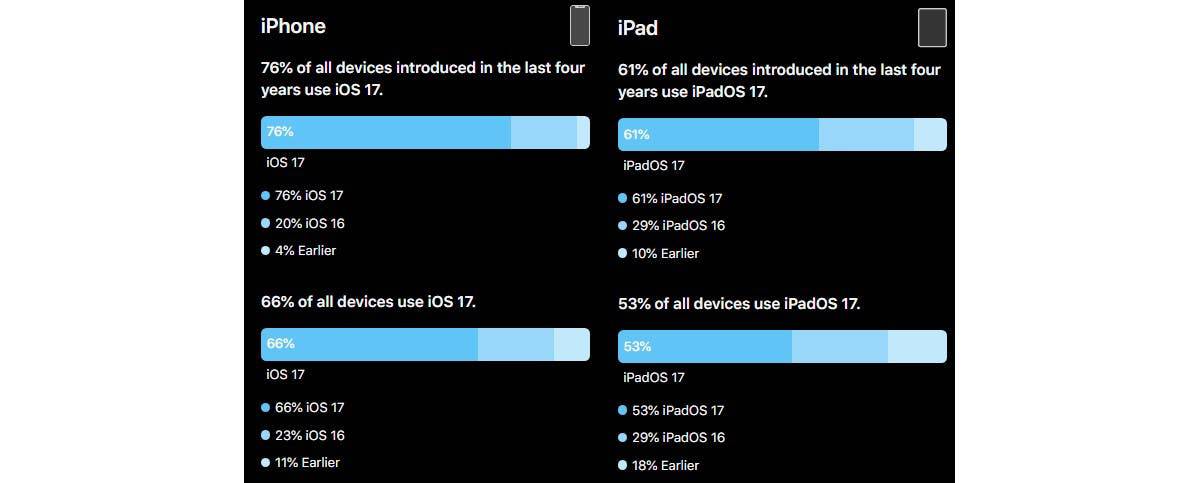Apple recently released its latest mobile operating system adoption figures, unveiling an intriguing contrast between iOS 17 and iPadOS 17 compared to their predecessors. While iPadOS 17 shows surprising momentum, iOS 17’s adoption lags behind its counterpart from last year.
Diverging Paths: iOS 17 Adoption Stumbles, iPadOS 17 Gains Traction
iOS 17 Adoption Trails Expectations: As of February 2024, iOS 17 sits on 76% of iPhones released in the past four years. While this penetration rate seems respectable, it pales in comparison to the 81% achieved by iOS 16 at the same point in its lifecycle. This suggests a slower uptake, potentially indicating user perception of less-compelling features or updates offered by iOS 17.
Furthermore, 20% of recent iPhones still cling to iOS 16, while 4% remain on older versions. When considering all active iPhones, the landscape shifts slightly. With iOS 17 commanding 66%, iOS 16 holding 23%, and earlier versions collectively occupying the remaining 11%.
iPadOS 17 Surges Ahead: In stark contrast, iPadOS 17 boasts a more impressive adoption rate. 61% of iPads released in the past four years run on iPadOS 17. Significantly exceeding the 53% achieved by iPadOS 16 at the same stage last year. This trend extends to the broader iPad user base, with 53% running iPadOS 17. Followed by 29% on iPadOS 16 and 18% on older versions.
Possible Explanations and Beyond: The reasons behind these contrasting trajectories remain speculative. Perhaps iOS 17’s feature set resonated less strongly with iPhone users compared to iPadOS 17’s appeal to iPad owners. Additionally, the maturity of the iPad ecosystem, compared to the constant influx of new iPhone models, might play a role.
It’s crucial to remember that while these figures are positive compared to the largely fragmented Android landscape (where adoption data isn’t readily available), they still leave room for improvement. As Apple continues to iterate on its mobile operating systems, understanding user preferences and addressing identified shortcomings will be essential in driving wider adoption and enhancing the user experience across both iPhones and iPads.






